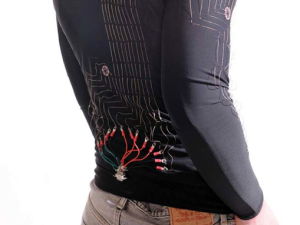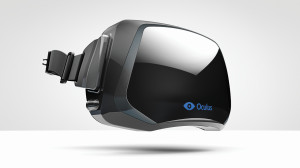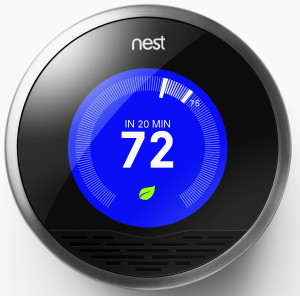Wearable Smart Devices | Ushering in the Future of Smart Technology
 Today, there are many companies competing for innovation in the field of wearable tech. Smartphones, tablets, and computers have advanced rapidly, but it looks like the future lies in wearable smart devices. Not only can wearable technology make our lives easier, but it can also help to make the lives of many with illnesses or disabilities more comfortable and productive. Let’s take a look at a few of the most anticipated smart devices changing the way we use technology.
Today, there are many companies competing for innovation in the field of wearable tech. Smartphones, tablets, and computers have advanced rapidly, but it looks like the future lies in wearable smart devices. Not only can wearable technology make our lives easier, but it can also help to make the lives of many with illnesses or disabilities more comfortable and productive. Let’s take a look at a few of the most anticipated smart devices changing the way we use technology.
Google Glass
 Google Glass is one of the most famous examples of wearable Tech. The idea of a completely hands free and portable computer has a strong draw for most people. This technology fits like a pair of sunglasses but offers a head mounted display, a headset that is controlled with through the wearer’s voice. Although there are many companies making variations on the product, Google’s seems to be the most advanced and streamlined. The product was developed by Google X, the company’s R&D department which has been given the assignment of spearheading advanced technological development.
Google Glass is one of the most famous examples of wearable Tech. The idea of a completely hands free and portable computer has a strong draw for most people. This technology fits like a pair of sunglasses but offers a head mounted display, a headset that is controlled with through the wearer’s voice. Although there are many companies making variations on the product, Google’s seems to be the most advanced and streamlined. The product was developed by Google X, the company’s R&D department which has been given the assignment of spearheading advanced technological development.
Oculus Rift
 Oculus Rift, a new virtual reality gaming headset, has been getting a lot of press recently, as well. Although virtual reality—in one form or another—has been around for decades, this device aims to finally get it right. This headset is designed to be implemented with various systems, though they must meet the software requirements before the technology will be operational for a specific game.
Oculus Rift, a new virtual reality gaming headset, has been getting a lot of press recently, as well. Although virtual reality—in one form or another—has been around for decades, this device aims to finally get it right. This headset is designed to be implemented with various systems, though they must meet the software requirements before the technology will be operational for a specific game.
Recently purchased by the social media giant, Facebook, the Oculus began as a Kickstarter project that achieved a massive amount of support on the internet. Initially a developer kit was released for those interested in helping to debug and improve the device. Now, a version built for mass market is currently in development. The acquisition by Facebook forced them to rethink the design in light of the higher level of public interest that has been generated.
Smart Clothing
At the same time, companies such as AIQ have begun to produce smart clothing. There are many uses for this technology, and there have been various implementations. Nike has developed shoes that have built-in sensors that send real-time data to a smartphone or other device to help monitor exercise. This technology can also be implemented into a wristwatch as well as other types of clothing.
The ability to add technology to clothing in order to monitor health issues has also been a major achievement in wearable tech. Patient’s clothing can send real-time data to health professionals in order to better serve their needs. Nanofibers embedded in cotton clothing and coated in electronic materials can help to keep smart devices charged without having to be plugged in.
Bands and Wearable Monitors
Wearable bands and monitors with reactive technology that provide feedback of the body’s functions can be used for medical purposes. The implementation of these devices will redefine healthcare. Medtron, a company that has been manufacturing pacemakers since they first became available, has been able to implement remote monitoring so that doctors can monitor the patient’s heartbeat for signs of problems.
As in the previous example, technology built into clothing will completely change how healthcare professionals monitor their patients. Wearable health systems also let patients keep track of their own information in real time. Doctors will have access to much more information, which will help them to better diagnose health concerns. There are also wearable devices such as the Sun Friend, which absorbs sunlight and lets the wearer know if the exposure is getting to a dangerous level.
Home Automation and Wearable Devices
 There is a considerable amount of wearable tech designed for use in home automation as well, as Nest reviews and Vivint reviews are showing evidence of attempting to adapt their existing systems to better make use of new wearable smart devices. This technology can streamline daily life and make everyday tasks more efficient. Although smartphones are equipped with the ability to control these systems, wearable devices have been able to reduce the need for complex controls in favor of simple motions or gestures.
There is a considerable amount of wearable tech designed for use in home automation as well, as Nest reviews and Vivint reviews are showing evidence of attempting to adapt their existing systems to better make use of new wearable smart devices. This technology can streamline daily life and make everyday tasks more efficient. Although smartphones are equipped with the ability to control these systems, wearable devices have been able to reduce the need for complex controls in favor of simple motions or gestures.
The Ring
 The Ring is a Kickstarter project that attempts to offer this in a comfortable and efficient way. This type of device not only makes it easier for the everyday user to better control their automated home system, but also offers a level of usability to those with physical impairments. Although these devices generally come with preset features, they have the ability to be reprogrammed for unique movements and inputs.
The Ring is a Kickstarter project that attempts to offer this in a comfortable and efficient way. This type of device not only makes it easier for the everyday user to better control their automated home system, but also offers a level of usability to those with physical impairments. Although these devices generally come with preset features, they have the ability to be reprogrammed for unique movements and inputs.








